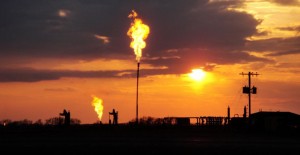From an Article by Walter Einenkel, Daily KOS Staff, June 21, 2018
A new study published in Nature says that the amount of leaked methane is short-changed in the EPA’s own reporting of emissions. According to the study’s authors, the amount of information left out by the EPA is considerable.
Methane emissions from the U.S. oil and natural gas supply chain were estimated using ground-based, facility-scale measurements and validated with aircraft observations in areas accounting for ~30% of U.S. gas production. When scaled up nationally, our facility-based estimate of 2015 supply chain emissions is 13 ± 2 Tg/y, equivalent to 2.3% of gross U.S. gas production.
This value is ~60% higher than the U.S. EPA inventory estimate, likely because existing inventory methods miss emissions released during abnormal operating conditions.
Methane emissions of this magnitude, per unit of natural gas consumed, produce radiative forcing over a 20-year time horizon comparable to the CO2 from natural gas combustion. Significant emission reductions are feasible through rapid detection of the root causes of high emissions and deployment of less failure-prone systems.
The issue comes from the less-than-ideal infrastructure used in many cases to contain methane, and the less-than-ideal protocols in repairing a leaking gas and oil infrastructure. As Inside Climate News explains, the amount of leaked methane missed by the EPA “is just as bad for the climate in the short term as the carbon dioxide that results from burning natural gas for fuel.”
That is bad. It is unlikely that the EPA under this administration will use what resources it has left to fix this situation. Instead they will probably attack the study itself, the paradox being that what the study has uncovered is exactly what the EPA is supposed to make sure happens: safer, cleaner facilities.
In addition, very large emissions from leaking isolation valves at transmission and storage facilities were quantified using downwind measurement but could not be accurately (or safely) measured using on-site methods. There is an urgent need to complete equipment-based measurement campaigns that capture these large emission events, so that their causes are better understood.
I would tell you to not hold your breath waiting for Scott Pruitt’s EPA to do anything, but you might need to hold your breath just to survive our country’s deteriorating air quality.
>>>>>>>>>>>>>>>>>>>>>>>>
See also: US oil & gas methane emissions 60 percent higher than estimated: High emissions findings undercut the case that gas offers substantial climate advantage over coal — ScienceDaily

